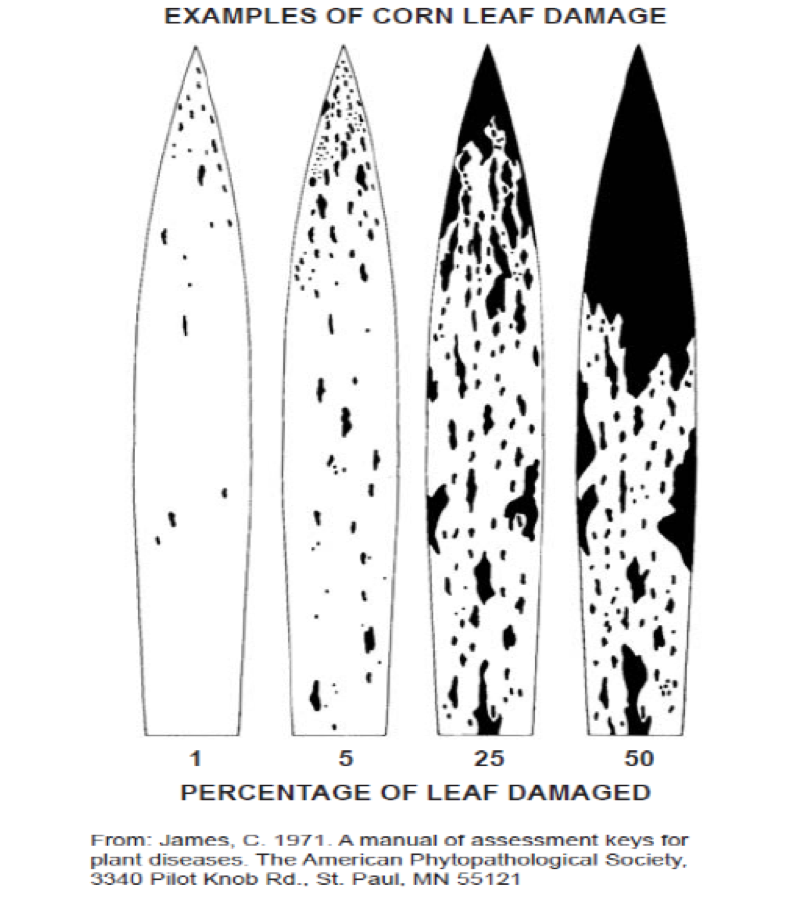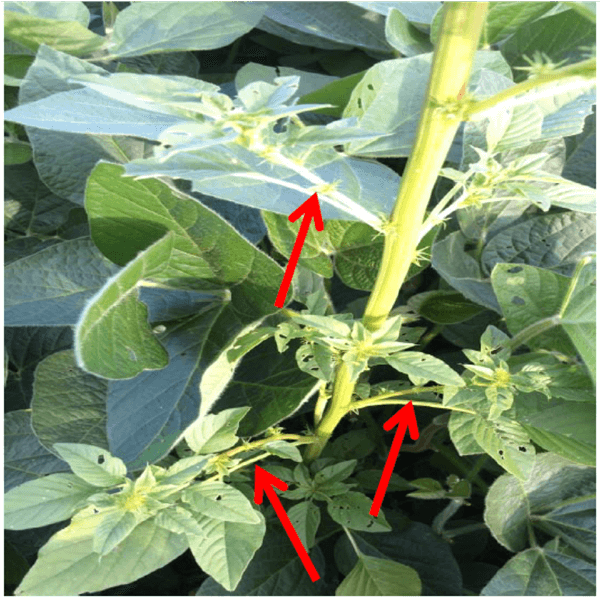Brought to you by: Jonah T. Johnson, MS, CPAg, CCA - Sales Agronomist, PCT | Sunrise
July 9, 2019: Corn Disease Evaluation: Incidence versus Severity and Palmer Amaranth Identification
2019 has brought us many challenges and we are only halfway through! Frequent rain events will allow the disease inoculum to keep building. Foliar fungicide application is in full swing in some parts of Ohio. If you have a grower who undecided about applying a foliar fungicide and wants to evaluate disease pressure before employing an application, you should always look for two things: Disease “Incidence” and “Severity.”
This means you look how many leaves that you sample have the leaf disease (i.e. Northern Corn Leaf Blight (NCLB) or Gray Leaf Spot (GLS)). If in example, 7 out of 10 leaves have GLS, then the "incidence" is 70%.
Then you take this one step further by measuring "Percent (%) severity". This can be a challenge for the untrained eye. I use the "quadrant" method.Take a corn leaf, cut it into 4 pieces, representing "quadrants" to make it into 25% sections, so you can rule out if you have lesions in only 1 of the 4 pieces, then the max "severity" you could have is 25%.
Then you try to gauge how much of the leaf surface is occupied by the disease lesions. If you have more than 50% incidence and the disease is high severity of sporulating, leaf-tissue disease lesions on the ear leaf and above, then it’s a "no-brainer" to spray.
GLS threshold is 5% of ear leaf affected by lesions and above the ear leaf. There is no threshold for NCLB, but most agronomy practitioners use the same threshold for GLS when making threshold decisions.

Identifying Palmer Amaranth
Palmer amaranth will be poking its head up above soybean canopies fairly easy this year. Some easy tips to identify this cantankerous pigweed are below.
Large Seed head

Long petioles (longer than diamond shaped leaflets)

Long petioles (longer than diamond shaped leaflets)
